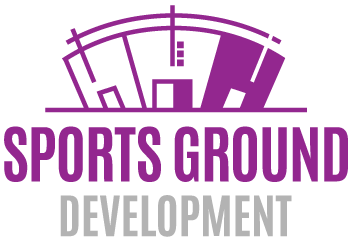Lighting is an indispensable aspect of sports venues, specifically stadiums where a multitude of sports events take place. The essence of stadium lighting transcends beyond merely illuminating the field; it plays a pivotal role in ensuring that players can perform at their optimum levels and remain safe whilst doing so.
At Sports Ground Development, we know as sports competitions intensify, the importance of having exceptional lighting becomes even more apparent. This article delves into how stadium lighting significantly impacts player performance and safety, shedding light on modern advancements that aim to bolster both.
The intricacies of stadium lighting require a meticulous approach to ensure that the playing field is adequately lit, and potential hazards are minimised. The dual role of lighting – enhancing performance and ensuring safety, forms the core of this discourse.
A deep dive into the dynamics of lighting unveils its substantial influence on the game, the players, and the overarching safety protocols that are integral to organised sports.
The Influence of Lighting on Player Performance
The provision of adequate lighting is crucial for ensuring visibility and clarity during gameplay. A well-lit stadium facilitates better sightlines, allowing players to track the ball, judge distances accurately, and make split-second decisions which are often the hallmark of competitive sports. The essence of having proper illumination cannot be overstated, as it directly correlates with the performance levels players can attain during a match.
In addition, modern lighting solutions have emerged that mimic natural daylight conditions, offering a semblance of consistency and predictability on the field. The psychological aspects are also noteworthy; a well-lit stadium invariably boosts player morale and confidence, creating an atmosphere conducive to competitive sports.
The intertwining of physical and psychological facets under the umbrella of adequate lighting underscores its importance in fostering a competitive yet safe environment.
Ensuring Player Safety Through Adequate Lighting
Safety remains a paramount concern in sports, and proper lighting is one of the pivotal factors that contribute to a safer playing environment. By mitigating shadows and reducing the chances of misjudgment, good lighting significantly lessens the likelihood of accidents and injuries on the field.
Furthermore, adherence to established lighting standards and guidelines is instrumental in promoting player safety, ensuring that the illumination levels are appropriate for the sporting activity in question.
Besides adhering to standards, the design and layout of lighting fixtures play a crucial role in promoting safety. The goal is to ensure uniform lighting that minimises glare, which can be detrimental to players’ vision and reaction times. The narrative of player safety is incomplete without a thorough examination of the lighting systems in place, reinforcing the notion that good lighting is synonymous with a safer sports environment.
Advancements in Stadium Lighting Technology
The evolution of stadium lighting technology, especially with the advent of LED lighting, has marked a significant stride towards achieving better performance and safety standards. LED lights, known for their energy efficiency and superior illumination, have become a staple in modern stadiums. Their ability to provide uniform lighting, coupled with a longer lifespan and lower maintenance, makes them a preferable choice for stadium authorities.
Smart lighting systems are another facet of modern lighting technology. These systems boast the capability to adapt to different playing conditions, thereby ensuring optimal lighting regardless of external factors such as weather. The adaptive nature of smart lighting systems not only augments player performance but also significantly contributes to ensuring player safety, marking a notable advancement in the realm of stadium lighting.
The Effects of Glare and How It’s Managed
Glare is a common concern in stadium lighting design. It can severely impede visibility, thereby affecting both player performance and safety. The management of glare is a meticulous process that involves careful planning and implementation of lighting fixtures to ensure minimal interference with players’ vision. Effective glare management not only contributes to better gameplay but also significantly enhances safety on the field.
Various strategies are employed to manage glare, including the use of shields, louvres, and visors on lighting fixtures, as well as optimising the placement and angle of lights to reduce direct glare.
Additionally, technological advancements have led to the development of anti-glare lighting solutions which are being increasingly adopted in modern stadiums. The concerted efforts to manage glare underline the broader objective of creating a conducive and safe environment for sports competitions.
Conclusion
Stadium lighting is a vital component that directly influences player performance and safety. The discourse has unearthed the importance of adequate and well-designed lighting systems in promoting not only competitive fairness but also in ensuring the well-being of the players.
Stadium managers are encouraged to consider the modern lighting solutions discussed herein, as they endeavour to create an environment where sportsmanship can thrive under the bright, safe lights.
The continuous advancements in lighting technology promise a brighter future, pun intended, for stadiums around the globe. The shift towards smarter, more efficient lighting solutions is not only a step towards better performance and enhanced safety but also a leap towards more sustainable and eco-friendly sports venues.

